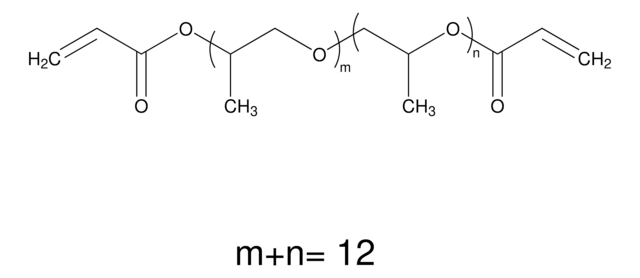246808
Trimethylolpropane triacrylate
contains monomethyl ether hydroquinone as inhibitor, technical grade
Sinonimo/i:
TMPTA
About This Item
Prodotti consigliati
Grado
technical grade
Livello qualitativo
Densità del vapore
>1 (vs air)
Tensione di vapore
<0.01 mmHg ( 20 °C)
contiene
monomethyl ether hydroquinone as inhibitor
Indice di rifrazione
n20/D 1.474 (lit.)
Densità
1.1 g/mL at 25 °C (lit.)
Stringa SMILE
CCC(COC(=O)C=C)(COC(=O)C=C)COC(=O)C=C
InChI
1S/C15H20O6/c1-5-12(16)19-9-15(8-4,10-20-13(17)6-2)11-21-14(18)7-3/h5-7H,1-3,8-11H2,4H3
DAKWPKUUDNSNPN-UHFFFAOYSA-N
Descrizione generale
Applicazioni
- Poly(trimethylolpropane triacrylate/Al(PTMPTA/Al) nanocomposites by in situ solution polymerization.
- Cross-linkable acrylamide/crotonic acid water retainer hydrogels.
- Polymer electrolyte for dye-sensitized solar cells.
Avvertenze
Warning
Indicazioni di pericolo
Consigli di prudenza
Classi di pericolo
Aquatic Acute 1 - Aquatic Chronic 1 - Carc. 2 - Eye Irrit. 2 - Skin Irrit. 2 - Skin Sens. 1
Codice della classe di stoccaggio
10 - Combustible liquids
Classe di pericolosità dell'acqua (WGK)
WGK 2
Punto d’infiammabilità (°F)
382.1 °F - closed cup
Punto d’infiammabilità (°C)
194.5 °C - closed cup
Dispositivi di protezione individuale
Eyeshields, Faceshields, Gloves, type ABEK (EN14387) respirator filter
Scegli una delle versioni più recenti:
Possiedi già questo prodotto?
I documenti relativi ai prodotti acquistati recentemente sono disponibili nell’Archivio dei documenti.
I clienti hanno visto anche
Il team dei nostri ricercatori vanta grande esperienza in tutte le aree della ricerca quali Life Science, scienza dei materiali, sintesi chimica, cromatografia, discipline analitiche, ecc..
Contatta l'Assistenza Tecnica.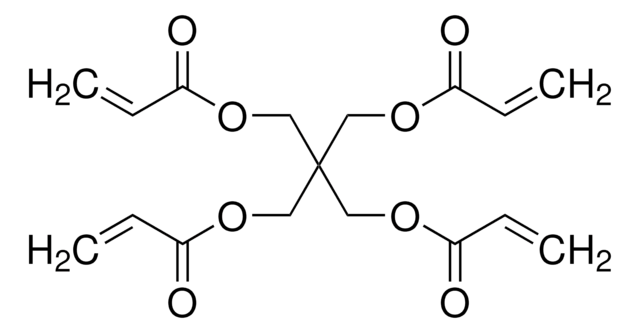
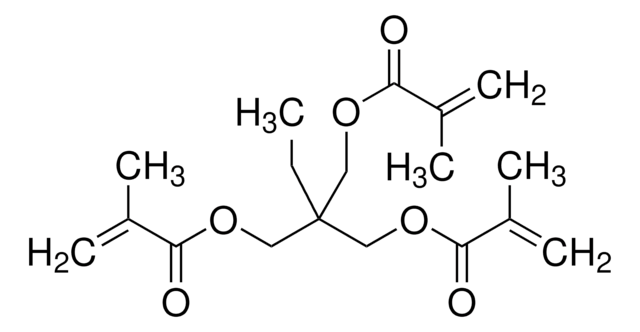


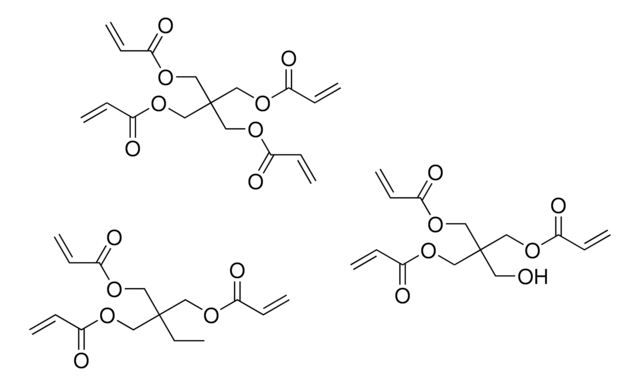
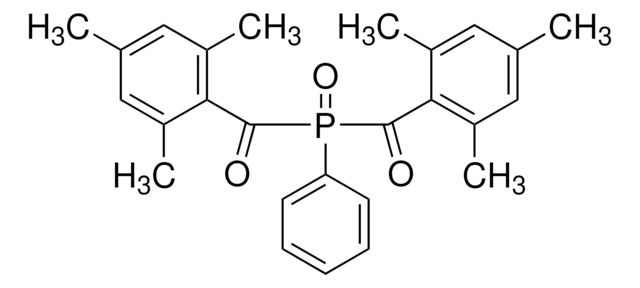


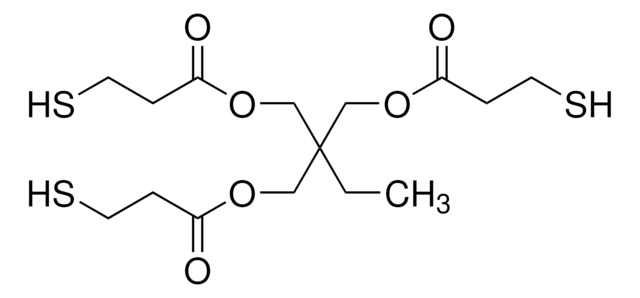





![Tris[2-(acryloyloxy)ethyl] isocyanurate](/deepweb/assets/sigmaaldrich/product/structures/254/494/1a620abc-8043-457f-92ec-87a959682438/640/1a620abc-8043-457f-92ec-87a959682438.png)
